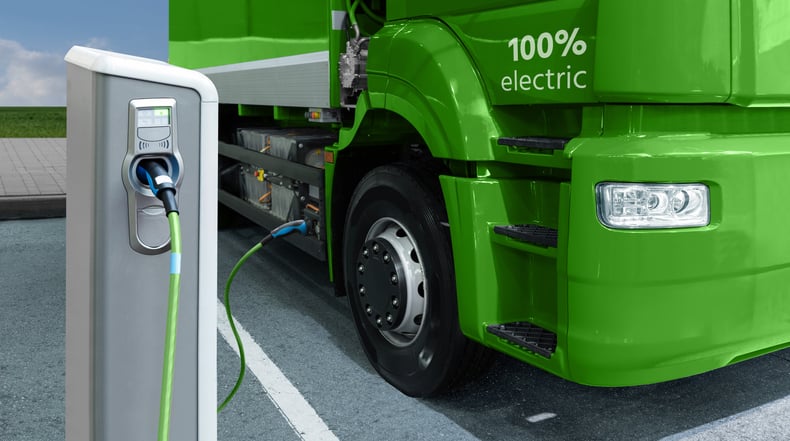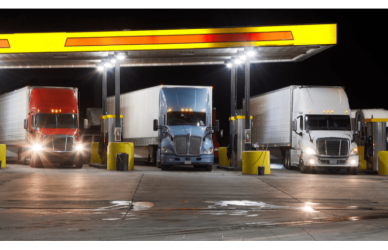While electric trucks are gaining traction in some sectors, their success is uncertain when it comes to Less Than Truckload (LTL) carriers. The biggest obstacles currently preventing LTL adoption of EVs include limited recharging infrastructure and longer recharge times than traditional fuel sources. This dual-use operation means most vehicles utilized for both overland services as well as local pickup & delivery must hit 20 hours out of a day’s 24-hour cycle — making EVs unlikely candidates given current infrastructure limitations.
With the aim of determining how efficient electric vehicles are in long-haul transportation, AAA Cooper Transportation’s president and COO Charlie Prickett has calculated that while an EV may take 6-7 hours to charge, it can provide 400 miles worth of operational time – approximately 8 hours. This ratio indicates EVs have remarkable power compared with traditionally powered pickups when considering cost effectiveness for LTL applications.
The necessary charge cycle would takt that vehicle out of use during critical times for large LTL fleets, Prickett said. This would make it necessary to have more trucks and more drivers to replace one truck that is currently capable of completing a full day’s work without significant delays for refueling.
If LTL trucks were limited to 400-mile trips followed by six to seven hours of recharge idle time, the “economic leverage of asset utilization and transit speed could be negatively impacted,” Prickett said in an email. He went on to say that for LTL, the range and economic effect on equipment utilization and delivery transit times would be “particularly impactful.”
With about half of Cooper’s 3,000 vehicles falling under the dual-use category, the adoption of EVs would effectively restrict many of their trucks to urban service, according to Prickett.
Truckload carriers are facing a unique challenge in the lack of EV infrastructure, but they have an advantage over LTL carriers when it comes to fuel efficiency. With up to 200 gallons at their disposal and 1,500 miles available for travel per tankful fill-up – typically taking anywhere from 20 minutes to half an hour – truckload carriers are set for extended stretches on the open road.
The difference between truckload and LTL truck utilization is “stark,” Prickett said at the SMC3 annual winter meeting in Atlanta earlier this week. “That differential will have to be overcome for large LTL fleets to successfully adopt EVs.”
“The economic value proposition (of EVs) has yet to be discovered,” Prickett said in an interview with FreightWaves. “But that doesn’t suggest alternative cleaner energy shouldn’t be pursued for the future.”
Prickett affirms that the electric vehicle revolution hinges on three crucial elements: increasing charging speeds, bolstering charge stations and advancing clean energy solutions. Advances in these areas will spur industry growth – offering a more efficient alternative to traditional transportation methods.
Prickett reported that the company is working with two major customers on testing out Electric Vehicle (EV) technology. Additionally, Knight-Swift Transportation Holdings Inc., Cooper’s parent company has also jumped into EV testing to embrace this new era in transportation technologies.
Navigating Uncharted Waters and Preparing for Challenges
Electric vehicles (EVs) can come with a hefty price tag, often twice as expensive as diesel trucks. However, government incentives are available that make the cost of EVs comparable to their diesel counterparts – in California state alone offering discounts up to $208,000 per truck! On top of this is an additional federal incentive worth approximately $40k on offer under the Inflation Reduction Act.
While Prickett doesn’t expect cost to be a long-term obstacle as prices begin to decline, he was quick to point out some other potential pain points in making the transition. He boasts that Coopers technicians are “extremely skilled people” who should have little trouble adapting to new technology, but still will require additional training in the maintenance and repair work required for EVs.
Government officials are aiming for the end of an era, setting deadlines to phase out diesel-powered trucks in favor of a new age where battery and fuel cell electric vehicles will power regional hauls. But these timelines remain nebulous as experts acknowledge that completely removing diesel from roads could be more arduous than expected.
The challenge of truck battery size and weight is weighing heavily on logistics companies, threatening to limit their range and payload capacity. To move the same amount of freight, they may need more vehicles – a costly requirement with far-reaching implications.
With parking already in short supply in many areas, there’s the additional challenge of accommodating battery-charging stations. While LTL carriers can have terminals to locate their charging stations, truckload carriers would need to charge batteries from roadside locations.
Denise Kearns, an environmental professional with the EPA’s “SmartWay” partnership noted that the goals for transitioning to EVS are ambitious mostly due to the daunting costs. She predicts that demand and orders will trickle in initially, but that we “we have a long road to go.”
Executive vice president of advocacy at the American Trucking Associations (ATA), Bill Sullivan predicts that EVs will be unlikely to capture more than 10% of the Class 8 vehicle market share using the current available range and battery technologies.
Source: FreightWaves








